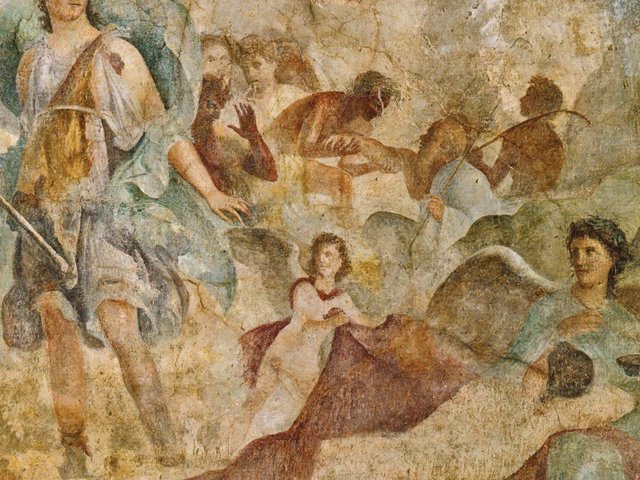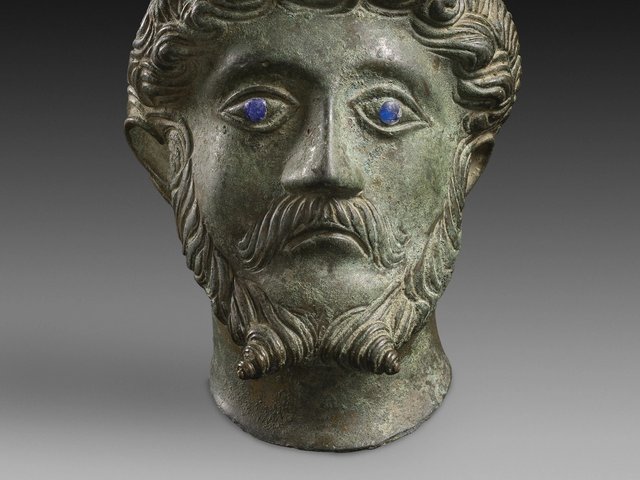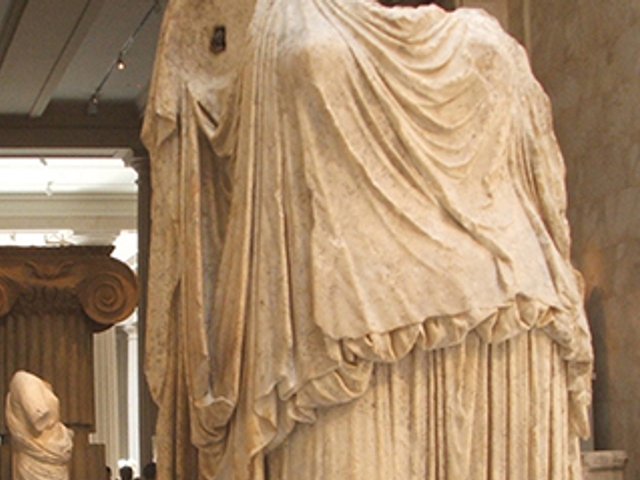One of the most poignant images in Greek and Roman art is the figure of a fallen Persian warrior in the Alexander Mosaic, around 100BC. This highly charged, virtuoso work from Pompeii depicts the epoch-making confrontation between the victorious Alexander the Great and King Darius. But on the margin of history, lying amid the galloping legs of frantic horses, we find the doomed rider gazing at his own reflection in a burnished shield, watching himself die. The shield resonates with other parts of the mosaic, and its “semi-accidental semi-transparency”, as Rabun Taylor calls it in The Moral Mirror of Roman Art, might stand as a programmatic introduction to his study of mirrors and reflections in Classical art. It demonstrates a principle that becomes clear from numerous illustrations: that reflections in Roman imagery are almost never truly casual or incidental.
In the modern world, reflections carry connotations of clear vision, insight and transparency. In antiquity they were associated just as often with obscurity and half-understanding. The most widely recognised expression of this is perhaps St Paul’s famous declaration: “For now we see through a glass, darkly; but then face to face.” Mirrors and reflections consequently became freighted with moral and mystical associations. Against this background Roman artists played self-consciously with the motif of the mirror surface or the reflective pool. Taylor teases out the possible implications of some of these works of art further than some readers may be prepared to tolerate, but in many cases the sophistication and subtlety of the imagery is beyond doubt.
An extraordinary example is the myth of Athena’s invention of the pipes, which is represented on Roman mosaics and carved marble sarcophagi. The story goes that Athena glimpsed herself reflected in a river when she tried to play her new musical instrument. Seeing her puffed-out cheeks, she threw the pipes away in disgust. Some works of art render the scene literally with the goddess looking at her image in the river, but in others the reflecting water is represented symbolically by the presence of the river-god himself. The personified river “reflects” Athena by staring back into her shocked face. It is a literalised view of the reflection’s agency that recalls the magic mirror in Snow White.
Similarly, the famous frieze from the Villa of the Mysteries at Pompeii uses mirrors in the most enigmatic way. The trompe l’oeil fresco wraps around the walls of one room displaying a panorama of human and Dionysiac characters, including the great god Dionysus himself. The predominant action seems to involve an initiation ceremony, and at one point a bride is prepared for marriage with the help of a mirror held up by Cupid. For Taylor, however, a scene on the opposite wall deserves particular attention. Here a young satyr stares intently into the bottom of a metal vessel, deeply absorbed in some kind of vision. A reflection? Or is this “lecanomancy”? As Taylor demonstrates, the frieze is only the most complex of a multitude of Dionysiac images that put mirrors at the heart of an initiatory cult.
The Moral Mirror of Roman Art goes far beyond art history, exploring literary and archaeological evidence to examine myths, issues of gender and masculinity, cult practices and ancient optical science—and the mundane realities of mirror usage. Heavily theoretical at times, the book is one of the most thought-provoking examinations of reflections in ancient culture.
The Moral Mirror of Roman Art
Rabun Taylor
Cambridge University Press, 285pp, £20.99, $34.99 (pb)
Peter Stewart is the director of the Classical Art Research Centre and a lecturer in classical art and archaeology at the University of Oxford. His publications include The Social History of Roman Art (Cambridge University Press, 2008).





